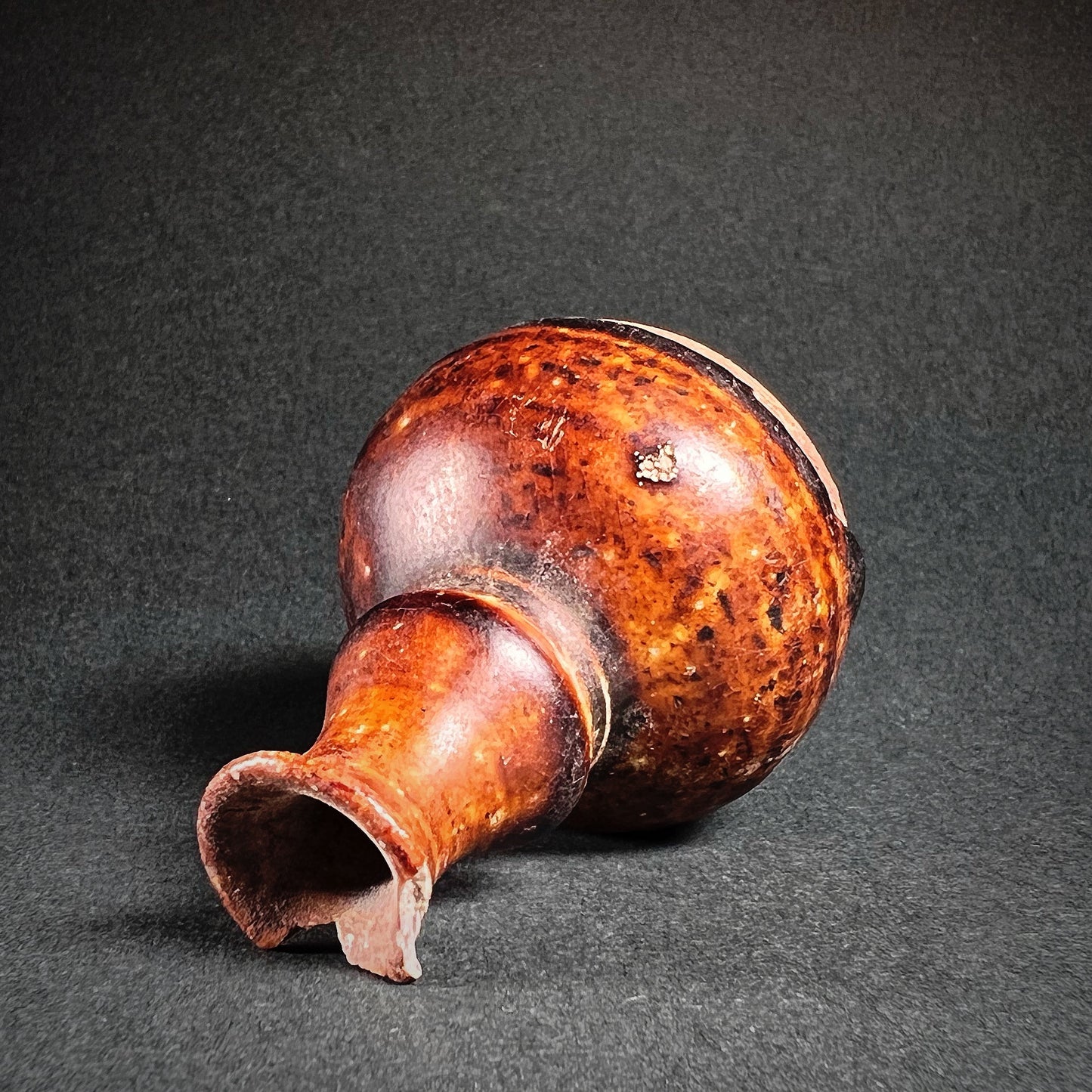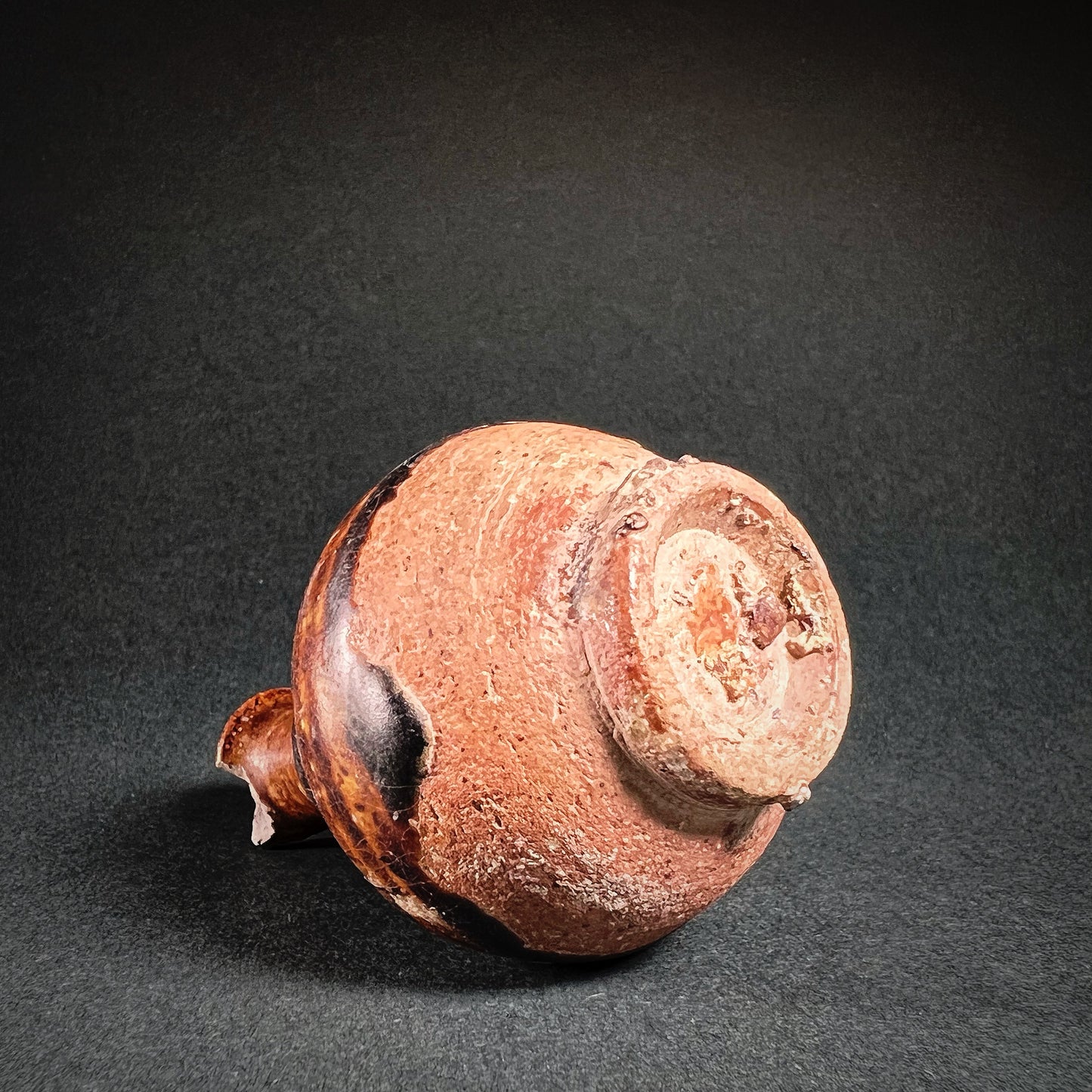Thai Sawankhalok Brown-Glazed Stoneware Mercury Bottle
Thai Sawankhalok Brown-Glazed Stoneware Mercury Bottle
Couldn't load pickup availability
Ayutthaya Kingdom Period, c. 1300–1500 AD, Ban Ko Noi Kilns, Sawankhalok, Thailand
A finw small gourd-shaped stoneware bottle with sloping shoulders, a long narrow neck, and a flaring rim, resting on a flat unglazed base. The vessel is coated with a lustrous deep brown glaze that extends from the shoulders downward, typical of the fine wares produced at the Ban Ko Noi kilns of Sawankhalok in north-central Thailand.
Small bottles of this type were exported widely across Asia, notably to Japan, where they were adapted as furidashi—candy containers used in traditional tea ceremonies—and fitted with small wooden lids.
The Sawankhalok (or Si Satchanalai) kilns, together with those of nearby Sukhothai, formed one of Southeast Asia’s largest ceramic production centers during the 14th–16th centuries. Sawankhalok wares are renowned for their refined craftsmanship and rich glazes, contrasting with the coarser, iron-speckled clay bodies of Sukhothai. Their exports reached as far as Indonesia, the Philippines, Japan, and the Middle East, flourishing particularly during the Ming Ban (1371–1509), when Chinese export restrictions opened foreign markets to Thai and Vietnamese ceramics.
An elegant and historically significant example of Thai craftsmanship and international trade in the early Ayutthaya period.
Good condition. Intact. Chips in the rim. Surface wear consistent with age and use. Glazing defects and firing flaws. Size approx. 7,4cm x 5,1cm x 5,1cm.
Provenance: Swedish private collection.
For a similar examples see:
Bottle with two vertical ring handles and lid, National Museum of Asian Art, Smithsonian, Accession Number: F1901.86a-b (https://asia.si.edu/explore-art-culture/collections/search/edanmdm:fsg_F1901.86a-b/)
Oil-Bottle, The British Museum, Accession Number: Franks.1990 (https://www.britishmuseum.org/collection/object/A_Franks-1990)
Mercury bottle, National Museums Scotland, Accession Number: A.1906.588 (https://www.nms.ac.uk/explore-our-collections/collection-search-results/?item_id=319890)
References and further reading:
Thai ceramics, National Museums Scotland.
The ceramics of southeast Asia: Thei dating and identification (2nd ed.), R.M. Brown, Singapore, Singapore: Oxford Univesity Press, 1988.
Last shipments from the Thai Sawankhalok Kilns, R.M. Brown, Art from Thailand, pp. 93-103. Mumbai, Marg Publications, 1999.
A Field Guide to Glazed Thai Ceramics, Dawn F. Rooney, Asian Perspectives, Vol 28. No 2, pp. 125-144, University of Hawai'i Press, 1988-89.




-
Shipping
The shipment will be prepared in the course of 3-5 days and dispatched via Posti Group Oyj or purchased item(s) can be picked up from our shop during the store's opening hours (Tarkk’ampujankatu 4, 00140, Helsinki, Finland). Within the Finland, all items are shipped via Posti Group Oyj unless otherwise requested. We pack the items carefully and mainly in recycled materials because we want to save nature. You will receive the tracking number for your items by e-mail.
-
Returns
Returns and exchange will be accepted within fourteen days (14) of receipt at the purchaser’s cost to include freight and packaging. Items must be returned in the same condition as when they were shipped, and will not be accepted if damaged or altered in any way. Please inform us via email (info@gotanmaailma.fi) or by calling +358408408352 before sending. We do not accept returns more than 14 days after delivery.




